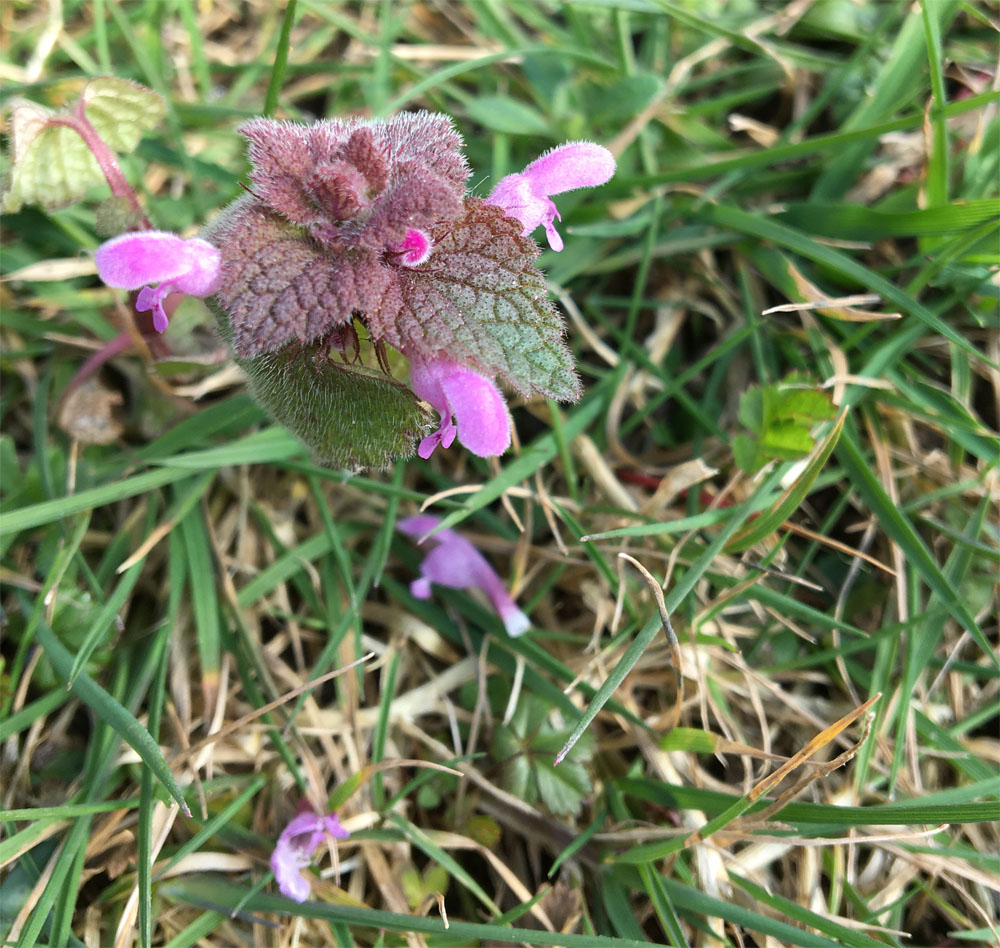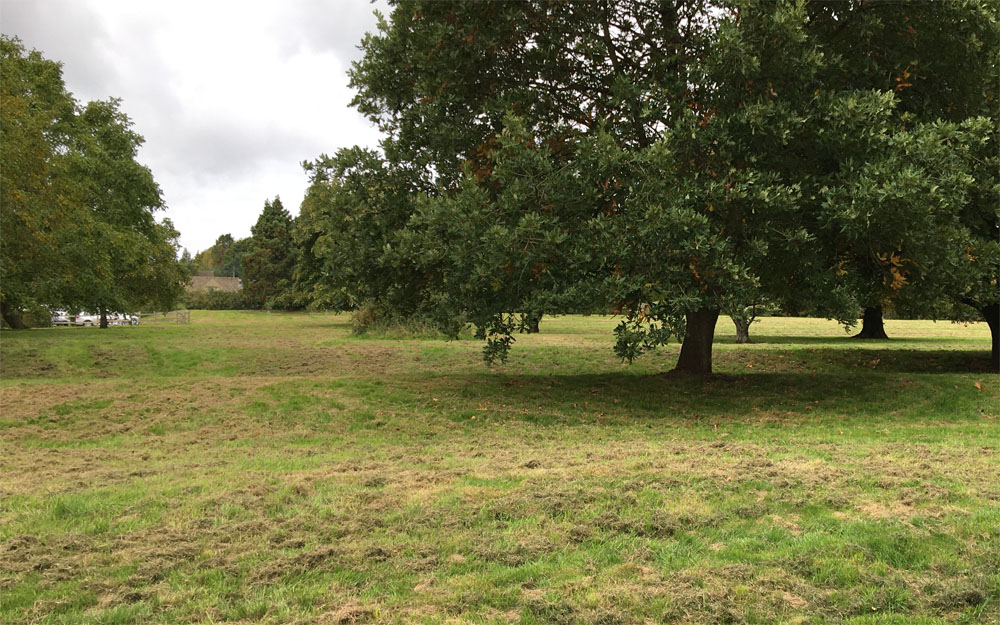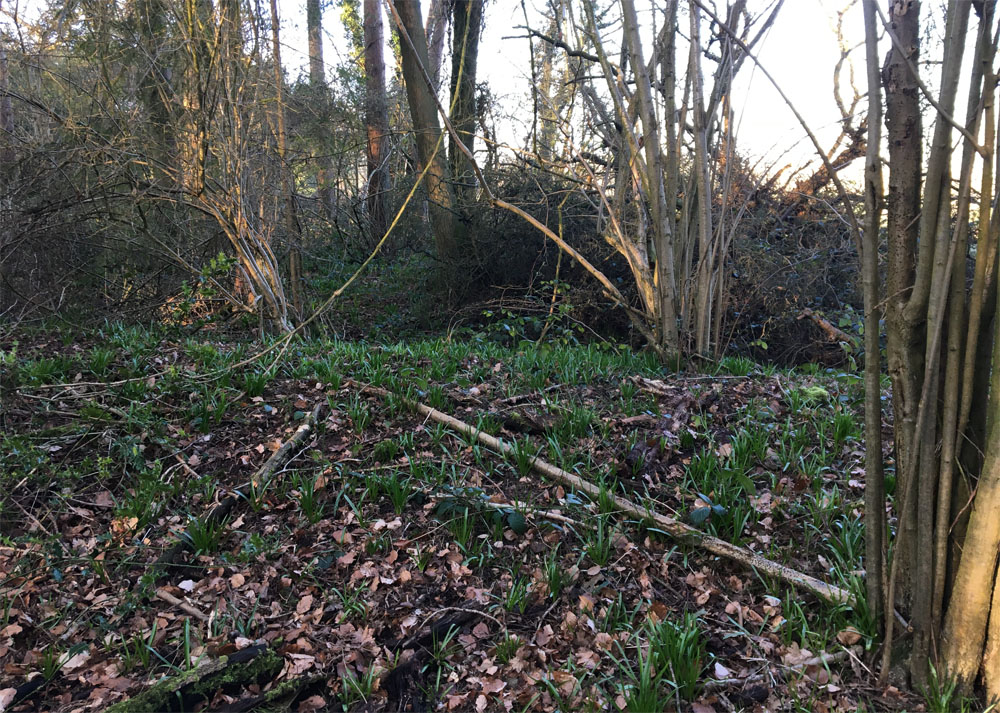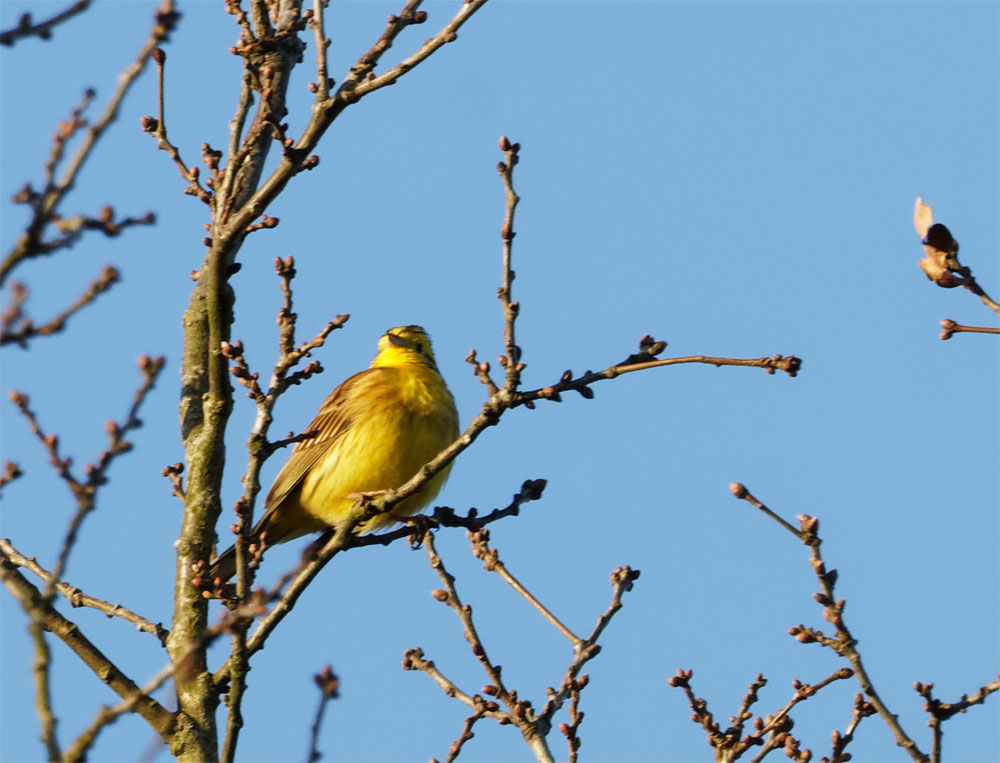A red dead-nettle. I photographed it last year when it ended winter by brightening the verges. Now it’s here again – nothing has changed.

Well, really. More has changed than we would ever have conceived possible. But not this flower, this tiny leftover from the whims of our Neolithic forebears, who inadvertently introduced a palette of wild flowers along with early agriculture. Dead-nettle reminds us that as we work, play upon or explore wild places, we are writing a story whether we wish it or not – and pages from it can be read 4,000 years after their authors are gone.
Read, that is, in the flowers, and more: in even the folds of fields. Ridge-and-furrow is the insignia of the Middle Ages: this field has not been ploughed for centuries. When the ancient historic landscape survives, so often does a rich community of wild things. Such places are alive, as well as a tangible link to what came before.

In the trees, too: via coppicing, the art of felling a tree yet keeping it alive. Stumps sprout new straight stems that were useful for many things, including the supports for the Sweet Track – a causeway built across boggy ground in Somerset almost 6,000 years ago. Hazel was one of the species used, and it continued to produce many useful goods until coppice was finally overtaken by modern industry. Woods remember the past with clustered stems of old coppice.

Dormice love them: hazelnuts to eat and safe places to hide. Many conservation groups encourage coppicing to keep this habitat alive. But there is a little more in the photo above – see the bank in the foreground? That, too, is a relic – post-medieval earthworks of unknown purpose. Whoever built them, whoever designed them, we do not know; but their legacy lives on, even with bluebells emerging upon it.
And pages from the past – and present – are written in the birds, too, and none as bright as the gorgeous yellowhammer, a bunting that thrived for so long in the hedgerows that the Enclosure Acts promoted, and suffered of course as agriculture industrialised. Their cry of a little bit of bread and No cheese is not as familiar as it once was, so I was delighted to see four of them on my walk yesterday.

We are still writing stories in nature. Future generations will learn far more about us than we might want them to know simply through reading the land, and it will not lie to save our blushes. Let us make sure that the stories we leave are honourable ones.